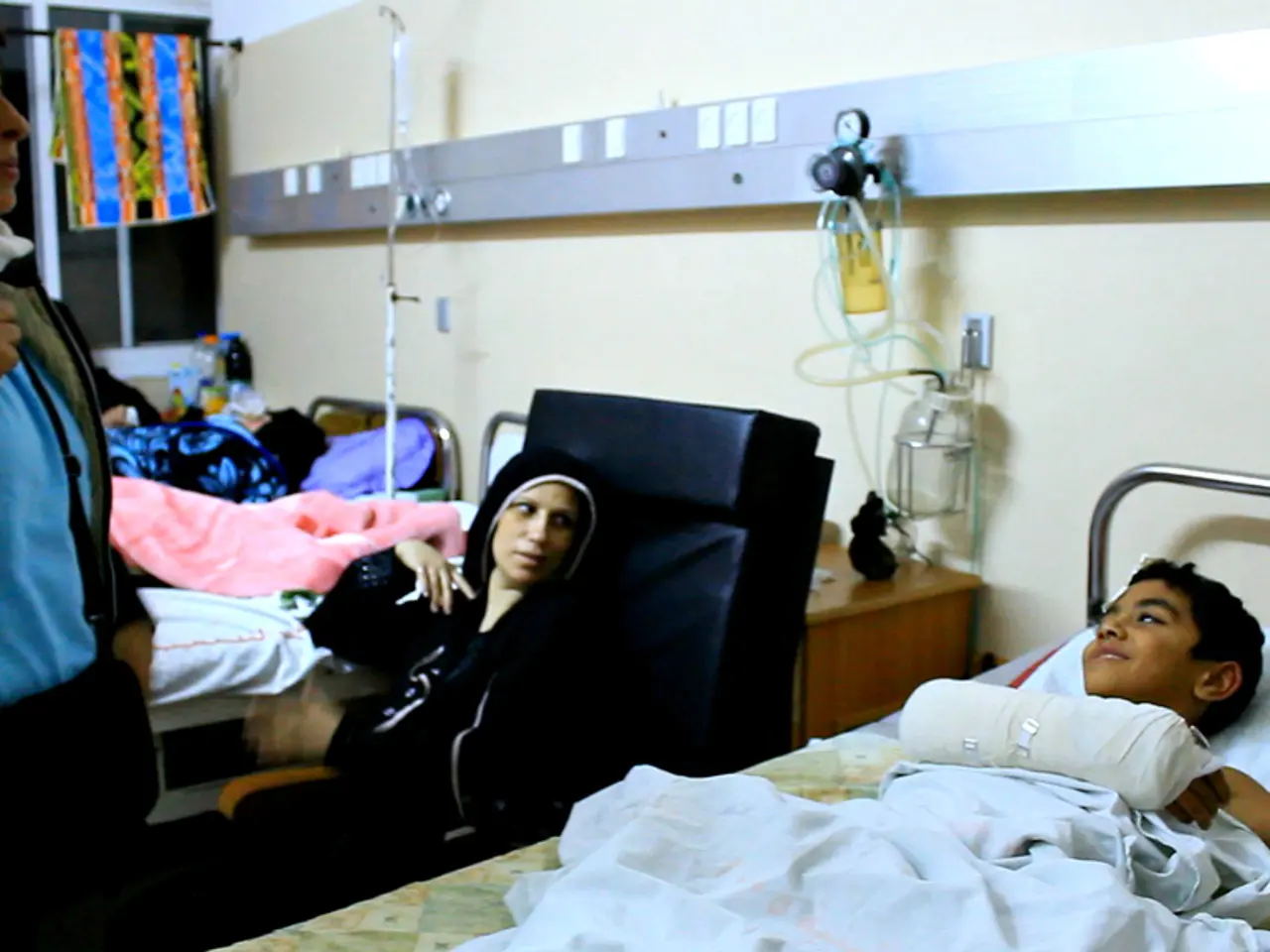Individualized vascular models tailored for optimum catheter choice: Two aneurysm embolization instances described
A groundbreaking approach to complex aneurysm coil embolization procedures has emerged, utilising patient-specific, three-dimensional (3D), printed, hollow vascular models. This innovative technique, as demonstrated in a recent case, has shown significant benefits in enhancing preoperative planning, improving coil deployment accuracy, reducing operative time, and facilitating skill development.
Enhanced Preoperative Planning and Simulation
The personalised 3D hollow vascular models precisely replicate the patient’s vascular anatomy, offering surgeons a clear visualisation of complex aneurysm structures. This enables thorough procedural planning and rehearsal, leading to improved accuracy and tailored treatment strategies.
Improved Coil Deployment Accuracy
By simulating the coil embolization using the models, surgeons can anticipate technical challenges related to coil navigation, placement, and stability inside the aneurysm sac, minimising procedural risks and optimising outcomes.
Reduced Operative Time and Complications
Preoperative use of these models allows for more efficient intervention as surgical teams can refine their approach beforehand, potentially lowering procedure time and decreasing the likelihood of intraoperative complications.
Training and Skill Development
The models serve as valuable tools for training clinicians in embolization techniques in a realistic and patient-specific context, without risk to the patient.
Understanding Complex Hemodynamics
Hollow models can simulate blood flow dynamics, aiding in evaluating aneurysm behaviour and risks, which supports decision-making regarding embolization strategies and device selection.
In a recent case, a female patient in her 40s presented with a 5 × 5 mm saccular aneurysm at the origin of the dorsal pancreatic artery. Preoperative simulations using a patient-specific vascular model facilitated preselection of the optimal catheter, ultimately leading to a successful intervention with no complications.
The models were created by converting Digital Imaging and Communications in Medicine (DICOM) data from three-dimensional (3D) computed tomographic angiography (CTA) images to stereolithography (STL) files. They were then printed using a Form 3L 3D printer with flexible, transparent materials, and the hollow feature was created using MeshMixer with a wall thickness of 1.0 mm.
The use of these models in complex aneurysm coil embolization procedures is a promising development, offering a potential solution to the need for multiple catheter exchanges when preoperative CT imaging fails to provide adequate information about catheter compatibility with primary branches of the aorta. This can help reduce prolonged procedure times and the increased risk of vascular intimal injury associated with multiple catheter exchanges.
The institutional review board approved the use of vascular models for this retrospective case report, and successful interventions were achieved using this approach in two cases of complex aneurysm coil embolization. The benefits and advantages of using these models are consistent with broader knowledge of advances in cerebrovascular treatment and 3D printing applications in surgery and medical device simulation.
- Interventional radiology benefits from the use of personalized 3D hollow vascular models as they precisely replicate complex aneurysm structures, enabling surgeons to plan and rehearse procedures, thus improving accuracy and tailoring treatment strategies for various medical-conditions.
- In the realm of science and medicine, these models are instrumental in coil embolization procedures, simulating coil navigation, placement, and stability inside aneurysm sacs, enhancing coil deployment accuracy to minimize procedural risks and optimize outcomes.
- The use of these models can lead to reduced operative time and complications by allowing surgical teams to refine their approach beforehand, ultimately making interventional procedures more efficient and potentially safe.
- Nutrition, fitness-and-exercise, health-and-wellness, and sports, like football, are essential components of maintaining cardiovascular health, but advanced practices in interventional radiology are also key in addressing chronic-diseases such as aneurysms.
- Embracing the latest advancements in science, technology, and medicine, interventional radiologists now employ 3D printing techniques to create patient-specific vascular models that aid in understanding complex hemodynamics and decision-making for effective treatment of a range of medical-conditions, including cardiovascular-diseases and beyond.




